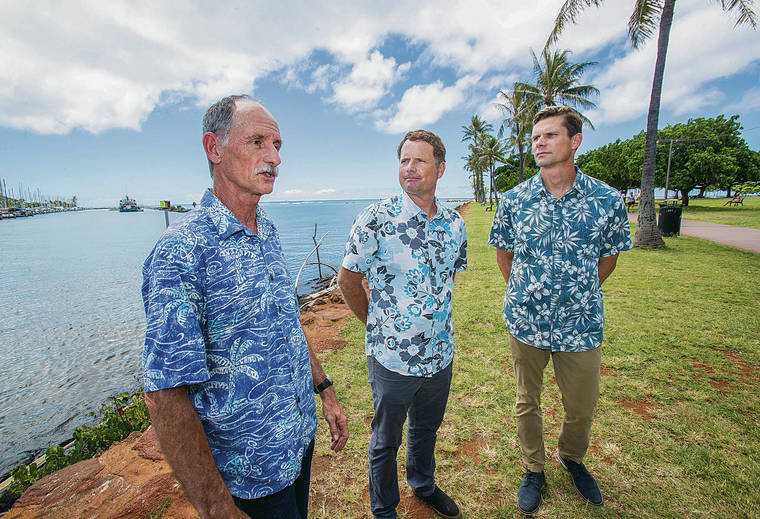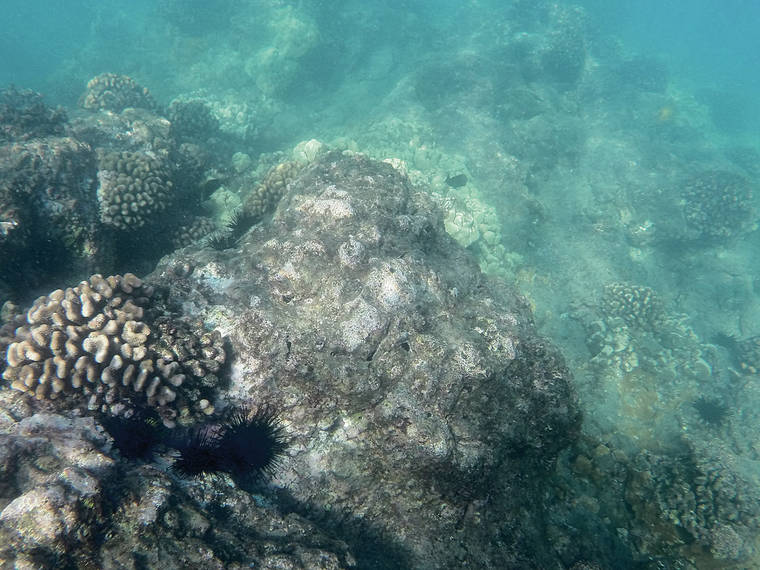With warmer than average ocean temperatures, scientists are bracing for a major coral reef bleaching event sometime in the weeks ahead.
Data from the National Oceanic and Atmospheric Administration indicate that ocean temperatures across Hawaii are extremely warm, at about 3 degrees Fahrenheit higher than normal. At the same time, ocean temperatures this month have been about 1.5 degrees higher than the same time in 2015. The peak of summer temperatures, however, has yet to arrive in September.
“If the ocean continues to warm even further as predicted, we are likely to witness a repeat of unprecedented bleaching events in 2014 and 2015 Opens in a new tab,” said NOAA scientist Jamison Gove.
Coral bleaching Opens in a new tab is a change from normal coloration of browns, yellows and greens to a nearly white color. It occurs when corals are exposed to environmental stressors, such as temperature increases, runoff or pollution.
When stressed, corals expel a symbiotic algae from within their tissues, causing them to turn white.
“We know this bleaching event is coming, and it’s probably going to be worse than the ones we experienced four and five years ago,” said state Division of Aquatic Resources Administrator Brian Neilson. “West Hawaii experienced a 50% mortality rate and Maui experienced 20-30% mortality rates on fixed DAR monitoring sites. We’re asking for everyone’s help in trying to be proactive and to minimize any additional stress we put on our corals.”
Signs of coral bleaching already have been found around the isles, scientists said, including at Kealakekua Bay on Hawaii island, in oceans off of West Maui, and at Kaneohe Bay as well as Hanauma Bay on Oahu.
While corals can recover from moderate levels of heat, they will die if it is prolonged, according to scientists. Reducing any other forms of stress on corals during these bleaching events can improve their chances of survival.
State and federal officials are asking the public for help in documenting the upcoming coral bleaching event, as well as in alleviating the corals from other stressors during this critical time. These actions are as simple as not touching corals while snorkeling, swimming or diving, not standing on them, and preventing pollutants found in some fertilizers and detergents from getting to the ocean.
Oceangoers can help report where they see bleaching corals at hawaiicoral.org Opens in a new tab, a new online tracker to help researchers map out the events in real time. Arizona State University also will monitor them via satellite imagery. Reports of healthy corals, which can offer insight on their ability to survive, are also welcome.
Coral reefs, which provide crucial habitat for marine life, are valuable not only for the cultural, recreational and economic benefits they provide, according to NOAA regional administrator Gerry Davis, but for the protection they provide coastal shorelines during storms.
They play a key role by breaking down large waves, and dissipating their energy, before they reach shore. A recent study valued Hawaii’s reefs at more than $835 million Opens in a new tab annually due to their function in providing flood protection.
Scientists said rising ocean temperatures, as well as king tides on Hawaii shores a few weeks ago, and the coral bleaching events are a wake-up call on the impacts of climate change.
“The future, in terms of ocean temperature, is not favorable for corals,” said Neilson. “We’re likely to see these ocean temperatures on a more regular basis in coming decades, so what we do now is really critical in preserving the corals we have and reducing stressors we have.”
—
How you can help save the reef
>> Help scientists track where coral bleaching is occurring in the Hawaiian Islands at hawaiicoral.org Opens in a new tab.
>> Avoid touching corals while diving, snorkeling or swimming.
>> Do not stand or rest on corals.
>> Use reef-safe sunscreens.
>> Keep anchor chains off the reef.
>> Prevent potential contaminants in fertilizers and detergents from getting to the ocean.




